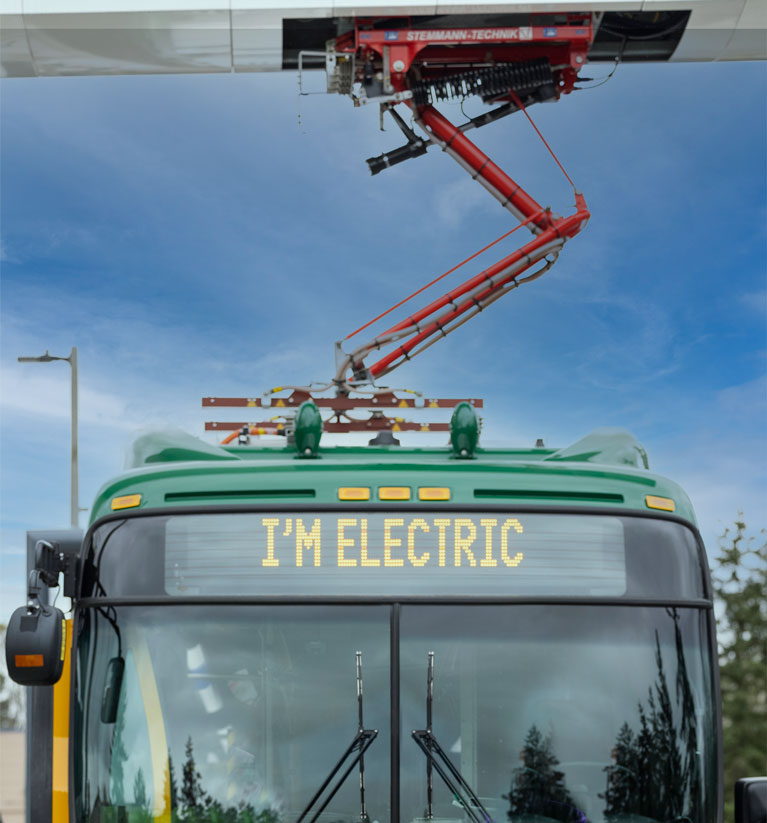
Courtesy King County Metro
By Bart Treece, Mobility Innovation Center director
It’s one thing to plug in a car for a charge, but what will it take to outfit electric buses? Over the next year, a new Mobility Innovation Center project will evaluate ways to convert bus bases to support the all-electric fleet of the future.
Bus bases are the heart of transit operations. This is where off-duty vehicles are housed, maintained, and dispatched to hit the streets. Some transit operators have acquired battery-electric buses, and more are on the way: King County Metro, for example, has 1,400 buses in total, with 195 zero-emissions buses comprising 74 electric trolley buses and 21 battery-electric buses on the road now.
King County Metro has a goal for a zero-emission fleet powered by renewable energy by 2035, and this will be a dramatic change to vehicle service and support at bus bases. There is some charging available for their nearly two dozen battery-electric buses but, as the fleet changes over, the power demand will also increase, which will require a conversion of existing bases.
Innovative project delivery
A typical path for conversion would involve hiring a contractor for design and construction, but there are other methods that could reduce up-front costs and shape how a bus base functions. The use of a public-private partnership (P3) could potentially support bus base conversions, but the model has never been done before at King County Metro, nor is it known to be used by any other transit operator in the U.S.
How public-private partnerships work
A public-private partnership has been used in transportation for the development of a new facility, like a toll road. Instead of a public agency raising the funds up front and assuming the risk, this portion would shift to a private sector partner who in turn operates for a specified period to recover that investment and make a profit. Ideally, there is mutual benefit to this relationship with costs spread over time and the new asset available for use sooner.
There are several unknowns for how a P3 model could work. This year, Hyun Woo “Chris” Lee from the Department of Construction Management at the College of Built Environments will lead a project to evaluate if P3 could be used for bus base conversation, identify best practices, and develop a financial assessment tool criteria and guidelines for King County Metro’s seven locations. This work could have wider industry applications and enable agencies and industry partners to improve how they work together.